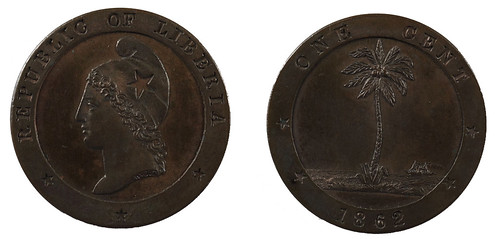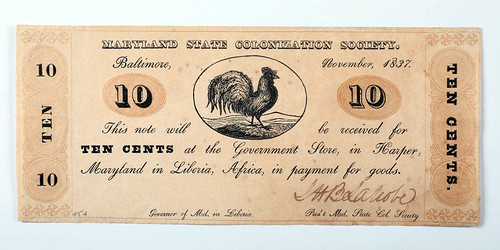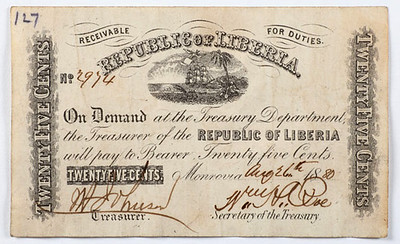
PREV ARTICLE
NEXT ARTICLE
FULL ISSUE
PREV FULL ISSUE
NUMISMATICS IN LIBERIAAn "O Say Can You See?" blog article from the Smithsonian National Museum of American History written by Leigh A. Gardner and Ellen Feingold of the National Numismatic Collection focuses on the numisamtics of Liberia. Here's an excerpt - be sure to see the complete article online. -Editor Why do U.S. dollars circulate in Liberia? And how did this dual currency system emerge? A dual currency system has existed in Liberia since the late 1800s. It can be a source of great hardship for Liberians, who might be paid in Liberian dollars but need to purchase imported food or other goods in U.S. dollars. This is particularly true when the value of the Liberian dollar falls relative to the U.S. dollar, as it has in recent years. The Liberian dollar was created when Liberia declared independence in 1847. One of the first acts of the Liberian government was to establish its own currency—in the words of Joseph Roberts, the first president of Liberia, "to mark the existence and the nationality of the Republic." 
One-cent pattern coin, Republic of Liberia, 1862 The first Liberian coins tell the history of the Liberian state. One side features the image of a palm tree with a sailing ship, representing the two key sources of Liberian wealth: trade and palm oil. The other side depicts an allegorical female figure wearing what is known as a Phrygian cap or freedom cap, associated in classical imagery with formerly enslaved people. Such a reference was particularly relevant in Liberia, which was founded in 1822 as a colony for freed African-Americans from the United States. Between 1820 and 1904, some 16,000 African-Americans migrated to Liberia. When they arrived, they found multiple currencies circulating in the region, the most important of which was the iron Kissi penny, pictured below. 
Kissi penny, Liberia, 19th and 20th centuries The American Colonization Society and its subsidiary societies, which organized the migration, also issued their own coins and notes that migrants could use at company stores for the purchase of supplies. The Liberian dollar was intended to replace these when Liberia declared itself an independent state. 
10-cent note, Maryland State Colonization Society 1837 When the Liberian dollar was issued in 1847, it had to compete not only with indigenous currencies like the Kissi penny, but also with European currencies like British pounds, shillings, and pence. The Liberian government struggled with debt throughout its early history, and one quick source of revenue was to print paper notes like this one from 1880. 
25-cent note, Republic of Liberia, 1880 To read the complete article, see:
 Wayne Homren, Editor The Numismatic Bibliomania Society is a non-profit organization promoting numismatic literature. See our web site at coinbooks.org. To submit items for publication in The E-Sylum, write to the Editor at this address: whomren@gmail.com To subscribe go to: https://my.binhost.com/lists/listinfo/esylum All Rights Reserved. NBS Home Page Contact the NBS webmaster 
|